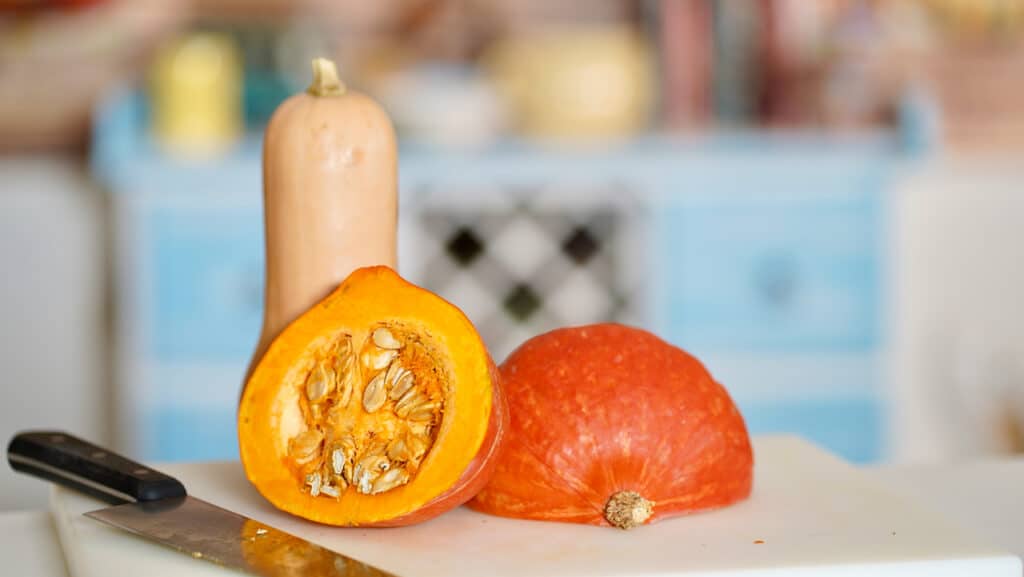Pumpkin is a versatile and nutritious ingredient that belongs to the squash family. Often confused with its close relative, the round and orange citrouille, pumpkin is more flattened and comes in various colors, including deep orange and dark green. Here’s a comprehensive guide to buying, preparing, cooking, and utilizing pumpkin in your kitchen.
Seasonality
Pumpkins are available in the markets from September to December and January to March, making them a staple for autumn and winter dishes.
Buying tips
There are over 150 different varieties of pumpkin in the world today! Among the best are the red curry squash, butternut, and kabocha or Japanese pumpkin. The large pumpkin known as citrouille in French is the one used for the Jack-o’-lantern. The pulp is then saved for the soup.
When buying fresh pumpkins, look for ones with a hard, unblemished skin. The stem should be intact. Frozen pumpkin is also available in various forms like cubes, purée, or steam-cooked. For oils, choose cold-pressed pumpkin seed oil for the best flavor and nutritional value.
Preparation
Before cooking, pumpkins need to be peeled and deseeded. The red curry squash skin is edible.
Cooking Methods
Pumpkin can be cooked in various ways:
Steamed
Boiled in water or milk
Roasted in the oven
Sautéed in a pan
In Japanese cuisine, pumpkin cubes are often sautéed with sugar, mirin, dashi, and soy sauce in a dish called kabocha nimono.
Culinary Uses
Pumpkins are incredibly versatile and can be used in:
Soups
Purées
Lasagna
Fries
Soufflés
Gratin dishes
Tarts
Mousse
Various desserts
Ice cream
Thin slices can be oven-dried, and the seeds can be collected, washed, and roasted with spices for use like pine nuts. Seeds and fibers that surround them can also be saved and used for stock. Pumpkin oil is best used cold as it doesn’t tolerate heat well.
Storage
Whole pumpkins can be stored for several weeks at temperatures between 10 and 15°C, away from light. Sliced pumpkins can be stored in the refrigerator for a few days, sealed in freezer bags. It can also be stored in the freezer for months.
Nutritional Value
Pumpkins are rich in antioxidants like carotenes, lutéine, and other carotenoids. They also contain carbohydrates, B vitamins, and minerals. Pumpkin seeds and oil are beneficial for arterial health due to their high content of phytosterols, unsaturated fatty acids, and vitamin E.
Varieties
There are numerous varieties of pumpkins, each with its unique characteristics. Some of the popular ones include:
Pumpkin Red Etampes: Most common
Potiron Bronze Montlhéry: Brownish-green skin, bright yellow flesh
Yellow Pumpkin: Also known as “Roman Yellow Squash,” very large
Red Curry or Kury: Small and chestnut-flavored.
Pumpkins are a versatile and nutritious ingredient that can be used in a variety of dishes. Whether you’re making a comforting soup or a delicious dessert, pumpkins are a fantastic addition to your culinary repertoire. Have fun cooking!

